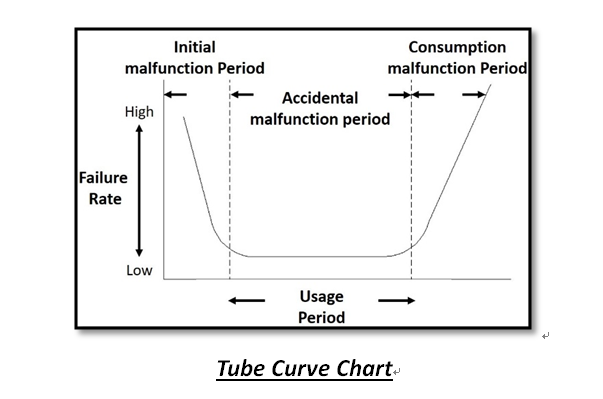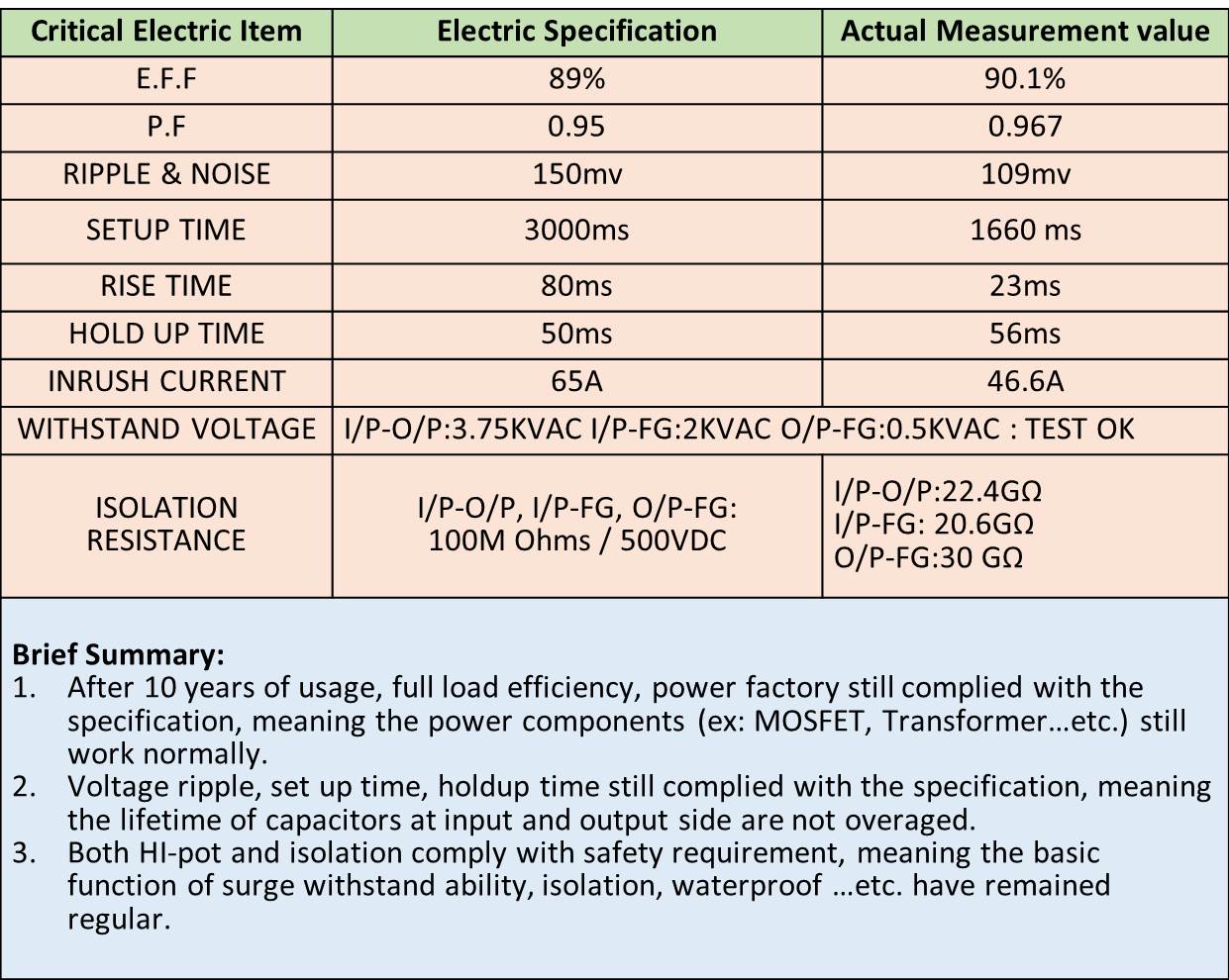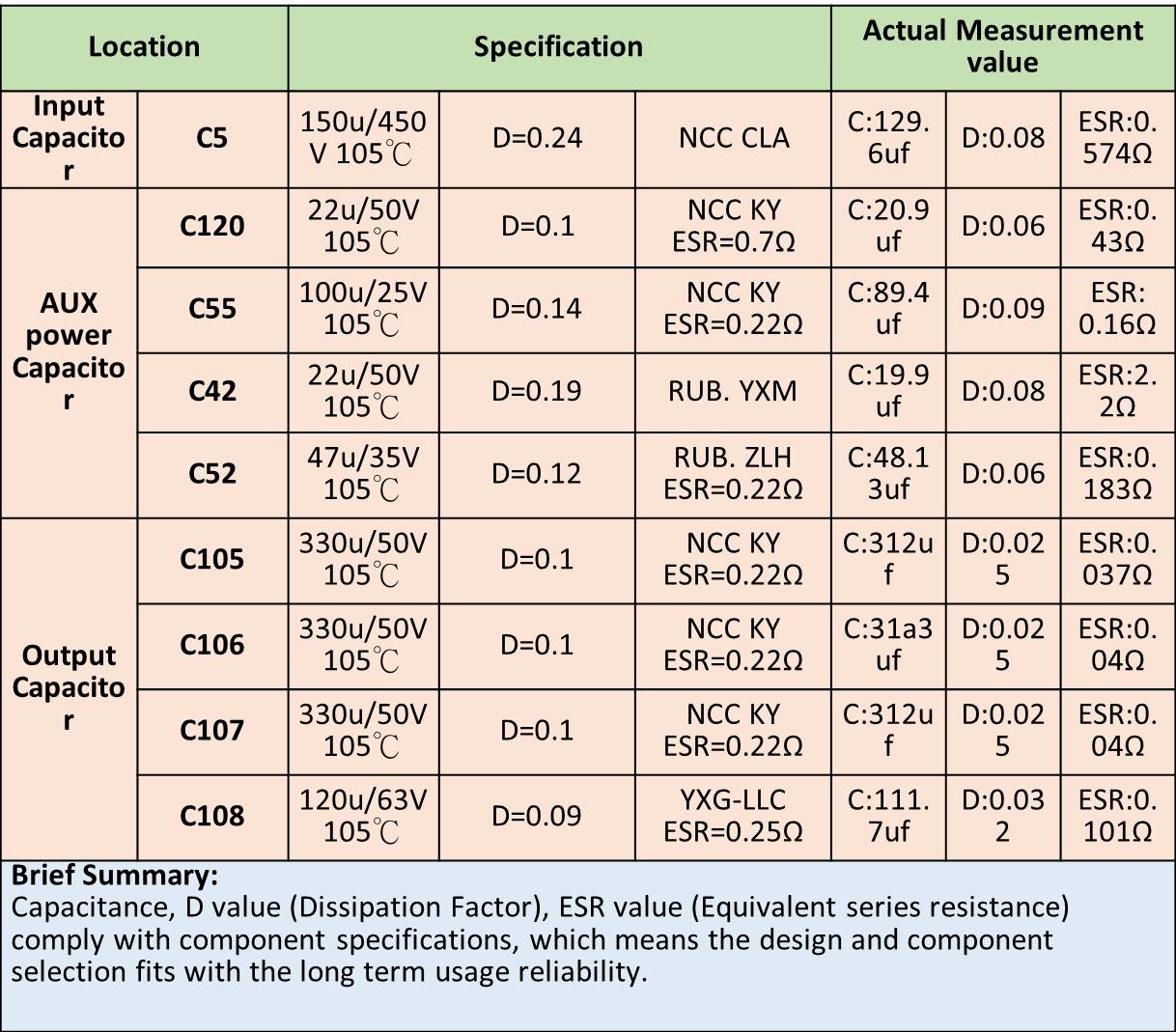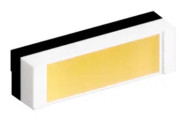In 2008, MEAN WELL officially released the first LED power supply – CLG-150 series and stepped into the potential LED market. Until now, the selling quantity of LED related products is uncountable. Having a special opportunity, MEAN WELL received several pieces of the CLG-150 products which were manufactured in 2008. A detailed investigation and analysis were executed, and the result is shared below.
The number of the components could be from dozens to hundreds depends on the wattage and topology of power supply. Each component is applied to the design with its necessity. How to assure the exact lifetime and evaluate the reliability is the know-how in the LED industry. Basically, the lifetime evaluation is determined by critical components (ex: Fan, electrolytic capacitor…etc.). In order to provide the accurate product’s lifetime and quality assessment, the Lifetime evaluation of MEAN WELL design must pass the verification of ORT (ongoing reliability), DMTBF, thermal shock and more.
This article is mainly for the discussion of electrolytic capacitor’s lifetime verification and evaluation. The aluminum electrolytic capacitor can be well affected by operation condition (ex: Temperature, Load). After a long time operation, the capacitance will reduce and the Dissipation Factor (tanδ) will increase then affect lifetime eventually. This phenomenon is called a diffusion effect, which means electrolyte diffuse to the sealing material, then spread externally. Normally, the lifetime of the aluminum electrolytic capacitor can be evaluated by using the law of Arrhenius (Reaction rate of chemical diffusion). Electrolyte dries up after a period of operation, causing capacitance to reduce and ESR increase. Half of the lifetime will be decreased when the ambient temperature rises 10℃. In contrast, if the temperature drops 10℃, the lifetime can be doubled.
The relation between lifetime & failure rate is demonstrated as below (Tube Curve Chart).

(1) Initial malfunction period
In order to avoid the initial malfunction period, MEAN WELL factory sorts out the defective components by carrying out the 100% burning test. As a result, most sold power supplies are already in the accidental malfunction period.
(2) Accidental malfunction period
Each power supply’s stability and reliability are related with MTBF, basically, the failure rate is quite low in this period, and the failure rate will be determined by user’s installation, operation condition (ambient temperature, derating, air flow, vibration…etc.).
(3) Consumption malfunction period
After the accidental malfunction period, products step into the consumption malfunction period, during which, most of the failure is related to components aging (ex: Fan, electrolytic capacitor).
Relationship between lifetime and load, temperature.
Based on the Tube Curve Chart above to further discuss, the Accidental malfunction period is related to the user’s installation and application condition (ex: ambient temperature, derating, ventilation, violation…etc.). Apart from other external factors, the following discussion only focuses on the relationship between the ambient / case temperature, load condition and lifetime.
MEAN WELL use the manner from the well-known electrolytic capacitor manufacturer to execute product’s lifetime verification. For example, CLG-150 series is a fully potted product, the output capacitor is designed with 10000 hours / 105℃ electrolytic capacitor from a famous Japanese brand. The lifetime vs load vs temperature is explained as below.
A. Relation among usage lifetime, load and ambient temperature - (Pic1)
For the relation between lifetime and load, when the ambient temperature is 55℃ and load is operated at 100%, lifetime is about 35Khrs; however, if the load is reduced to 75%, the lifetime can be 1.6 times longer.
For the relation between lifetime and ambient temperature, when load operated at 75% and ambient temperature is 55℃, lifetime is about 57Khrs. If reducing the ambient temperature to 45℃, lifetime will be doubled (114Khrs).
B. Relation between usage lifetime and case temperature - (Pic2)
Due to the internal temperature of the capacitor of the potted model is not easy to be measured, the external case temperature is used instead. If the case temperature is less than 55℃, lifetime is about 100Khrs. However, when the case temperature rises up to 70℃, lifetime will be reduced to 35Khrs.

Pic1 – Lifetime vs Load vs Ambient Temperature Pic2 – Lifetime vs External Case temperature
Analysis of Electric Performance and Reliability
The main abstract listed below is the analysis result of the electric performance and reliability of the CLG-150 used for 10 years from the market (Produced in December 2008. Applied to street lights) .
Analysis of electric performance – main spec.

Analysis of reliability characteristic – Electrolytic capacitor’s capacitance

Summary:
The priority of the design and component selection of MEAN WELL is the long term reliability. With current relevant reliability test (Limit of temperature ascent, ORT burn-in, thermal shock, vibration, salt spray…etc.), and the assessment (electric performance, isolation, lifetime…etc.) of the products used for 10 years, it is proved that both that the internal test is reliable and the product is made with great quality. It is a key factor that adopting the high-efficiency design and choosing the high-quality electrolytic capacitor to ensure the reliability and lifetime of the LED driver, not to mention that selecting a trustworthy LED driver is one of the main indexes to upgrade the lifetime of lighting fixtures.
MEAN WELL will keep upholding the policy of Total Quality Assurance & Customer Satisfaction to provide the best cost-performance products with our superior customer service.
For the lifetime evaluation and warranty statement, please refer to the MEAN WELL official Website.
By MEAN WELL: Sanford Su /Q.A. Dept. Aries Jian /R&D Dept.





 CN
TW
EN
CN
TW
EN









